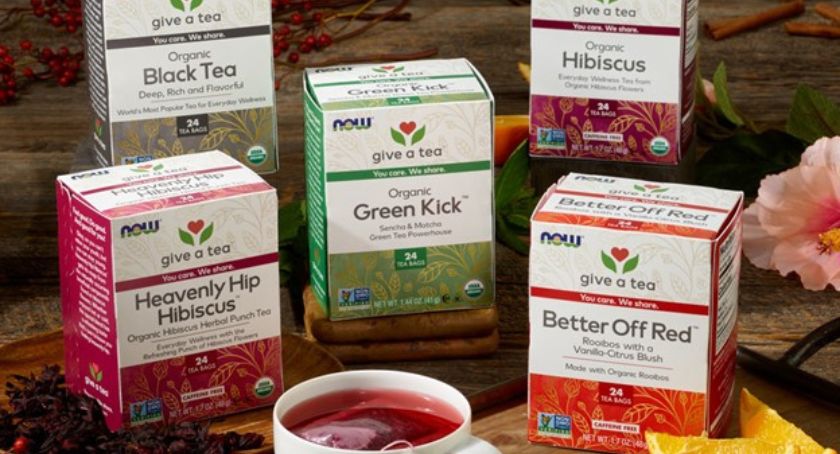Exclusives
Algae Breeds New Era of Nutritional Products
With a long history of traditional use, companies are harvesting and harnessing a functional family of bioactive compounds.
By: Sean Moloughney
As more consumers look for plant-based and vegan products, algae and seaweed have emerged as potent, sustainable sources of nutritional compounds.
The global algae products market is expected to reach $3.3 billion by 2022, at a CAGR of 6.7%, driven by the nutraceutical, cosmetic, pharmaceutical, and biofuel industries, according to a report by Meticulous Market Research. While the algae-derived biofuel industry hasn’t developed as some had hoped, nutraceutical application has begun to pick up steam.
Algae are photosynthetic organisms that grow in a range of aquatic habitats, from lakes and ponds to rivers and oceans. Marine algae have been well-known and utilized for their therapeutic benefits for hundreds of years. “Seaweeds have a long history of use in nutrition, food and complementary medicine in Asia,” noted Helen Fitton, PhD, chief scientist, Marinova Pty Ltd (Australia). “Life expectancy in Japan is longer than any nation in the world, a quality that is often attributed to a diet rich in seaweed.”
More recently, research into the nutritional value of seaweed has increased, revealing its diverse bioactivities, she continued. “Alongside this, technology has progressed to effectively extract and isolate the compounds within algae that attribute to its health benefits. Both of these advances have boosted the interest and availability of seaweed ingredients and products. Additionally, consumers are increasingly seeking nutritional products containing ingredients that are both sustainably sourced and backed by credible science. Seaweed addresses these consumer demands on both fronts.”
The market for algae-derived nutritional products is relatively young, but awareness is increasing significantly, according to Tryggvi Stefánsson, PhD, science manager, Algalif (Iceland). “The underlying consumer trend is definitely towards natural, functional ingredients that check the right boxes for sustainability, quality, and traceability. Microalgae cultivated under controlled conditions in locations that can provide clean energy and water inputs certainly address these demands particularly well.”
The market for algae products has expanded quickly over the last 10 years, according to Bob Capelli, executive vice president of global marketing, Algae Health Sciences, a division of BGG (Beijing Ginko Group). “Unfortunately, the economics of producing fuel from algae isn’t working out well; but due to the vast investment in that field over the last decade, there’s been a lot of spill-over into other applications for algae, primarily nutraceuticals. Plus, I think there is a global consciousness developing for harvesting plants grown in water as a sustainable force for the future.”
Algae naturally produce a range of bioactive compounds, including astaxanthin, beta-carotene, fucoxanthin, phycocyanin, beta-glucan, essential fatty acids (EPA and DHA), and others.
“There is a vast array of nutrients found in algae, and huge differences from species to species,” said Mr. Capelli. “For example, species like spirulina contain a wealth of different nutrients in a single plant.”
Dr. Stefánsson said algae can be compared to a toolbox where the appropriate species can be selected based on specific needs. For example, “blue-green algae (cyanobacteria) such as Spirulina sp. can have protein content in the 60-70% range whereas Botryococcusbraunii can have similarly high concentration of lipids. To take things even further, different algae have different composition of lipids and it is therefore common to cultivate certain species for EPA and other species for DHA.”
Astaxanthin
Dr. Oz put astaxanthin on the map and the market subsequently exploded, noted Scott Steinford, president, Natural Algae Astaxanthin Association (NAXA). “A shortage ensued but now there is market balance between supply and demand. Price and supply have made this an affordable and effective ingredient. Astaxanthin is one of the few supplements consumers can feel the benefit so there’s a lot of repeat purchase and word of mouth.”
The most studied and richest source of astaxanthin is the type derived from the microalgae Haematococcos pluvialis, he continued. “It’s known for its powerful antioxidant activity and related health benefits … Astaxanthin has a unique polar structure and ability to donate electrons and stabilize free radicals, which terminates the damaging free radical chain reaction and thus maintains the cell integrity. It has also been suggested that it stimulates the body’s natural antioxidant production.”
Research has supported multiple health benefits for natural astaxanthin, including benefits related to cardiovascular health, diabetes, exercise, brain, skin, and eye health, said Mr. Steinford. “In addition to its role as an antioxidant, it is also known for its anti-inflammatory, anti-apoptotic, neuroprotective, and cardioprotective effects. It is well tolerated, bioavailable and safe.”
Assuring consumers that they’re getting astaxanthin truly derived from Haematococcus pluvialis is important, he added. NAXA recently randomly selected more than 50 products sold at online retailers for testing, and results showed some either contained no astaxanthin or were spiked with synthetic material, according to Mr. Steinford. “Brands carrying the NAXA Verified mark passed third-party testing, proving consumers can look for the mark on labels to ensure the product they’re buying contains natural astaxanthin in the amount stated on the label.”
Production methods range from outdoor open cultivation in ponds and raceways to controlled indoor cultivation in specifically designed photobioreactors, noted Dr. Stefánsson. “Sustainability is directly connected to water and energy inputs, which are two key components of any algae cultivation setup,” he noted. “Water is the main input in any type of algae cultivation and having access to an abundance of contamination-free natural water is therefore of paramount importance. Similarly, as the cultivation is energy dependent (artificial lights, heating/cooling, dewatering, etc.) the sustainability of the energy source is key.
“The quality of the algae product starts with the condition of the input material (inoculum, water, and nutrients),” he continued. “A GMP-certified quality system is therefore needed to ensure full traceability throughout both the cultivation process, downstream processing, and any subsequent product handling. A big part of this is maintaining active contamination control throughout, both in relation to the algae culture itself and also the corresponding finished product.”
Icelandic Harvest is a branded formulation of astaxanthin developed by Algalíf. The astaxanthin is extracted from microalgae that are cultivated at the company’s state-of-the-art facility. Proprietary LED lighting and enclosed photobioreactors ensure both quality and concentration of the active compound but also minimize contamination risks, said Dr. Stefánsson.
According to Mr. Capelli, algae production, if done properly, can be “totally sustainable and environmentally friendly.” For example, “Algae Health Sciences’ astaxanthin farm uses the sun’s energy and has zero runoff into the local environment (since we produce in glass tubes in a closed system). This system also ensures quality since foreign algae species and all sorts of organisms and contaminants are kept at bay due to the glass tubes.”
“We’re still just scratching the surface when it comes to understanding how powerful algae-sourced nutrients really are,” he added. “For example, in just the last few years there have been over 20 new human clinical trials coupled with close to 200 new pre-clinical studies demonstrating various health benefits for natural astaxanthin.”
Omega-3
The North American market for algal omega-3 ingredients is expected to grow by 10% per year between now and 2022, according to Research & Markets (2016).
Sid Hulse, vice president, product development, PLT Health Solutions, said the company is seeing a “significant upturn” in demand for algae-based omega-3, particularly DHA. “This is due to the sustainability of the ingredient versus marine-based omega-3s, the trend toward plant-based ingredients, and also due to improved organoleptics.”
PLT Health Solutions produces its élantria Algal DHA from the microalgae Schizochytrium sp. The non-GMO algae used for élantria are cultivated in the EU in a closed system ensuring maximum purity, quality, and traceability, according to the company.
The raw material features a clean, enzymatic extraction process that is solvent-free. It is refined, deodorized and stabilized at state-of-the-art facilities by Polaris Nutritional Lipids (France) under strict quality control procedures, Mr. Hulse noted. “The proprietary QualitySilver stabilization process sets new standards for stability and shelf-life. PLT offers two élantria Algal DHA ingredients, either 40% or 70% DHA by weight, both in an ultra-stable form.”
Algal oils rich in DHA are known to be very sensitive to oxidation, he added, which can detract from both nutritional and organoleptic properties of a finished product. The QualitySilver process inhibits the onset of oxidation and prevents the oxidative cascade, he said.
“Consumers of DHA are among the most selective you’ll find since much of the material is targeted to sensitive applications,” he added. “With élantria Algal DHA, we are striving to give assurances of the highest possible quality to a market that increasingly demands it. From a consumer product developer’s standpoint, one of the features of élantria Algal DHA that stands out is its stability and resultant shelf-life.”
Fucoidan
Scientific evidence continues to emerge demonstrating the diverse health benefits of seaweed, according to Dr. Fitton. “Marinova is one such company making a significant investment in R&D to fully realize the potential of its seaweed ingredients, with 25% of total company revenue reinvested back into independent scientific studies, including human clinical trials.”
“Algae provides an excellent source of macro and micro nutrients, including protein, vitamins, minerals, carbohydrates and amino acids,” she continued. “But it is the specialized, bioactive compounds within algae that make it a truly remarkable nutritional source and set it apart from other food groups.”
Fucoidan is one particular bioactive compound found within macroalgae. In nature, fucoidan plays a pivotal role in protecting the seaweed from marine pathogens, environmental stresses, and UV damage. When extracted and consumed, research shows that fucoidan imparts protective effects relevant to human health, including reducing inflammation, balancing the gut microbiome, inhibiting viruses, and boosting immune cells.
Marinova Pty Ltd wild-harvests macroalgae from clean, remote ocean waters in line with their seasonal growth cycle. They are then sun-dried to retain the natural bioactivity of the fucoidan compounds. The Maritech fucoidan ingredient range is extracted using an aqueous process that uses green chemistry principles to retain the natural bioactivity of fucoidan without chemical solvents, according to Claire Smoorenburg, marketing and communications manager, Marinova.
“All Maritech fucoidan ingredients are batch-to-batch quality tested and globally accredited as certified organic, non-GMO, kosher, halal, and free from preservatives. Marinova is a zero-waste manufacturer, with all of its fucoidan extracts produced in Australia under cGMP, HACCP and ISO9001.”





















